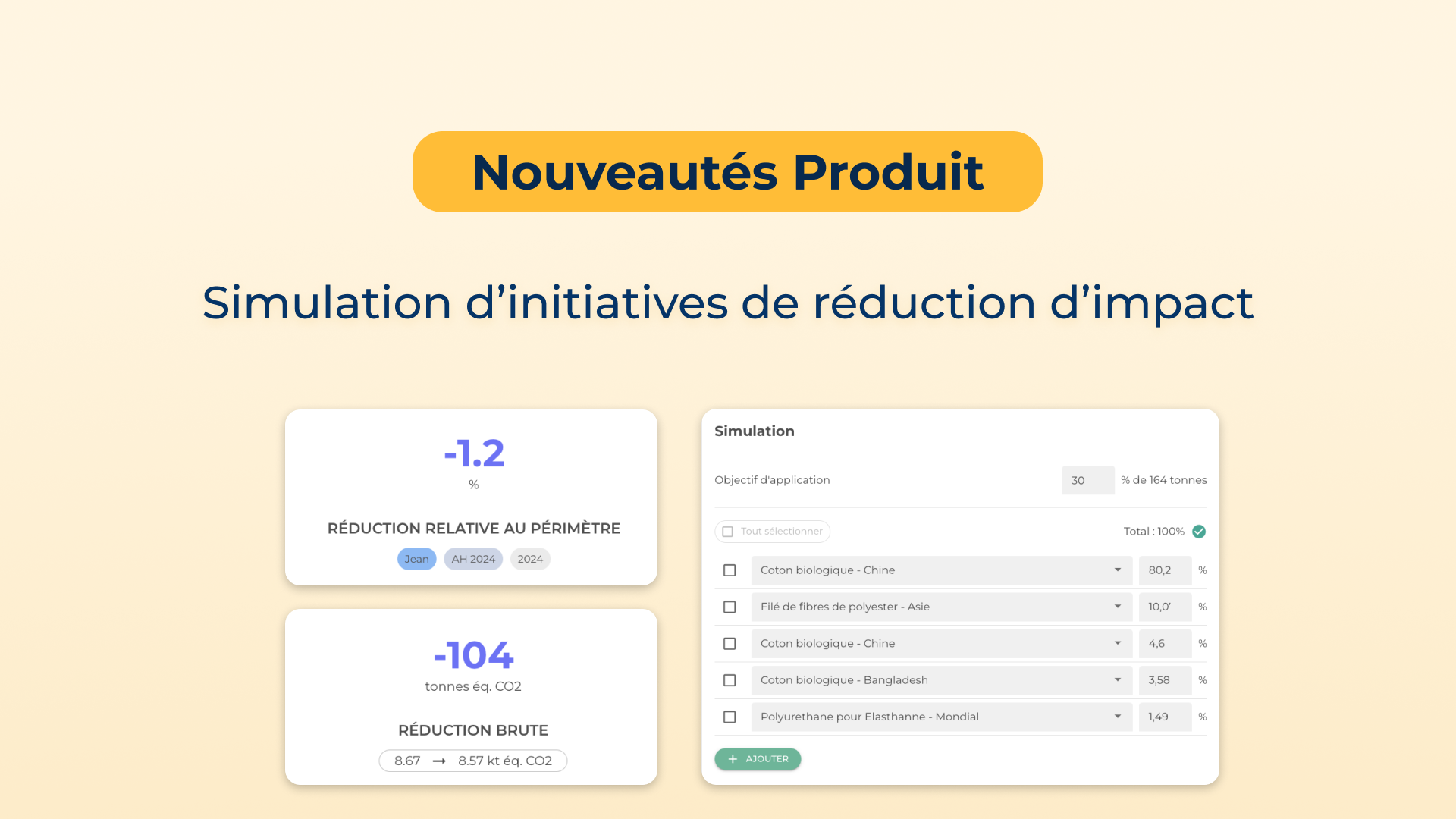
How do you know whether replacing a material in your products will have a significant impact on your brand? Until now, this has been more a matter of intuition than analysis. Today, Waro makes it possible.
While it was already possible to simulate material changes on Waro for a single product, it quickly became a headache to simulate these changes for an entire collection or family of purchases.
We're delighted to announce the release of a new large-scale reduction simulation feature. In just a few clicks, you can now model the impact of a material change (material mix) on an entire collection, a product family or an entire business perimeter.
🔍 Managing material impact by business line
Each team can create initiatives specific to its scope: reworking the material mix of a denim range, testing the switch to recycled polyester on a summer collection, or simulating the impact of switching from cotton to organic cotton on 50% of its t-shirts.
📊 Measure the benefits immediately
For each initiative created, instantly view two key indicators:
(e.g. Replacing all cotton with organic cotton on 30% of my jeans reduces the total impact of the "jeans" product family by 7.03%.
(e.g.: -1.59 kt CO₂) Replacing all cotton with organic cotton on 30% of my jeans reduces your brand's total footprint by -1.59 kt CO₂.
🔁 Explore multiple scenarios, refine your strategies
Compare different initiatives, identify the most virtuous material combinations, and build an action plan based on tangible data.
🚀 Prepare your reduction trajectory
This feature is a cornerstone of Waro's future impact trajectories module. It will enable you to :
By the end of July, you'll also be able to simulate levers on manufacturing processes (washing, dyeing, etc.). And from August, you'll be able to combine several simulations to project a consolidated reduction trajectory. With this brick, Waro gives you the means to transform your climate strategy into a concrete, data-driven action plan.

